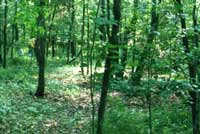DACF Home → Bureaus → Division of Animal and Plant Health → Integrated Pest Management → Teaching IPM in the Classroom → High School Curriculum → Environment and Ecology Lessons
 Teaching Integrated Pest Management in the Classroom—High School Curriculum
Teaching Integrated Pest Management in the Classroom—High School Curriculum
Environment and Ecology Lessons
The following IPM lessons are based on environmental and ecology concepts. Most lessons are in PDF form.
Pennsylvania State University High School Integrated Pest Management Lessons
- Biopotential of the common lawn pest Taraxacum officinale (plant sampling, biopotential)
- Determining Carrying Capacity: How Many Codling Moths Can an Apple Orchard Support? (population dynamics and carrying capacity)
- Estimating Pest Population Size: The Capture, Mark, and Recapture Method (sampling method used to monitor wildlife populations)
- Food Chains from the Field: Whoo’s for dinner? (Explore food chains and trophic levels through Owl pellets)
- View all Pennsylvania State University High School IPM Lessons here
Iowa State University IPM Pilot Program
- Pesticide Use: Environmental Awareness and Impact of Conservation Organizations (Pesticide impacts on the environment)
- View all Iowa State University IPM lessons here
Cornell University, New York State Integrated Pest Management Program: Teaching IPM
Browse the list below to find lessons of interest and then find the corresponding lesson on the host website above.
- Green Science: Composting for Better Soil (Teach students all about composting and start your own composting project at your school)
Pesticide and Toxic Substance Exposure Awareness Project
- Tri-fold brochure
- Curriculum Introduction
- Pesticide and toxic substance lessons and supporting materials
The full Pesticide and Toxic Exposure curriculum includes 7 chapters of research topics, accompanying teacher powerpoints, and classroom activities.

[Photo: (hardwood stand) Brian Lockhart, Bugwood.org]